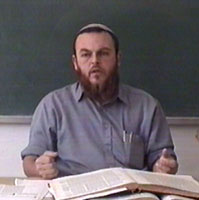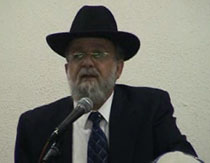Beit Midrash
- Sections
- Chemdat Yamim
- Parashat Hashavua
- Torah Portion and Tanach
- Bamidbar
- Bamidbar
We continue this week by delving into the connection to Parashat Bamidbar and Yom Yerushalayim. In Avraham’s "second aliya" at age 75, he became "shomer mitzvot" and went to the "place that Hashem will choose." Yerushalayim turned into the future capital of Israel, where Am Yisrael would come three times a year to the Beit Hamikdash.
The Land that Avraham was drawn to originally was the place that Hashem had chosen. Let us now return to our parasha and see how this piece completes the picture. The counting at the beginning of Bamidbar is repeated nearly 40 years later with almost exactly the same numbers, yet they had two very different goals.
The second counting was in preparation for the conquest which would turn the Land of Canaan into Eretz Yisrael. The first counting, in our parasha, was done regarding "the army of Hashem." Rashi explains that when Hashem brought down His Divine Presence, he counted the nation, one month after the opening of the Mishkan. The army of Israel has to include these two elements – conquest and sanctity – as the pasuk says: "Your camp shall be holy" (Devarim 23:15).
The Exodus had two end goals: 1) Acceptance of the Torah at Sinai as a holy nation; 2) Entering Eretz Yisrael and obtaining the land as a sovereign nation.
On Yom Haatzmaut we celebrate the latter, and on Yom Yerushalayim we celebrate the former. The Divine Providence surrounding the events is fascinating from a spiritual perspective. We first received independence and only nineteen years later were able to free Jerusalem. In the War of Independence, the Jewish quarter fell to the Jordanian Legion, to return only in the Six-Day War to the eastern part of the city and the Western Wall. Many people blamed David Ben Gurion for not allocating enough resources to defend Jerusalem in 1948. By establishing the state, Ben Gurion took upon himself a massive responsibility, knowing that all the Arab armies would attack the fledgling state and try to obliterate it. The strongest and most professional army was the Jordanian Legion, trained by British officers and possessing the most advanced weaponry. If the Legion would have focused on attacking other fronts, there is a good chance they would have prevented the State from surviving. Yet by Divine Providence they focused on Jerusalem, and thus the State survived. Ben Gurion decided to focus the troops on expanding the borders to sustain the State, but the cost was the Jewish Quarter.
Nineteen years later, the Legion once again attacked Jerusalem, bombarding the west from the east. This, through the grace of G-d, allowed us to unite the city. Yom Yerushalayim now joined Yom Haatzmaut. The two countings that we saw in the Torah once again took place. The motif of Pesach and Kriat Yam Suf was joined by Yom Haatzmaut, while Shavuot/ Matan Torah, was joined by Yom Yerushalayim.
This is the day that Hashem made; let us rejoice and be happy!

The Right Pace to Leave a Holy Place
Parashat Beha'alotcha
Rabbi Yossef Carmel | 16 Sivan 5764

Parashat Hashavua: Nitzavim in the Parasha and by Yam Suf
Rabbi Yossef Carmel | Elul 5785

Zaken Mamreh
Rabbi Yossef Carmel | 4 Elul 5767






















